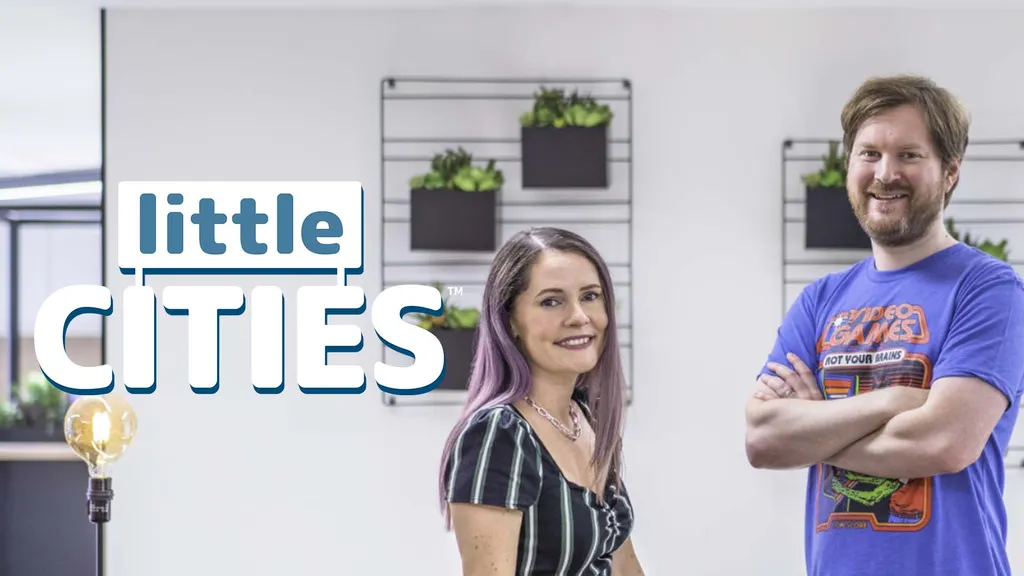Given the level of polish and detail in Little Cities, you’d be forgiven for thinking this was a Quest release developed by quite a large team of people.
But speaking to Purple Yonder’s James Howard last week revealed to me just how small the studio really is. “[My wife] Kelly and I both worked on the design,” he tells me. “I did all the programming for the game, so I ended up working out the technical systems for the code and stuff. And then she works on a lot of the stuff like the UI design and getting the levels just right — thinking what each item could be, the different buildings you can get, working all those things out.”
James and Kelly Howard make up the indie UK studio, which is the driving force behind Little Cities. They were helped along by some contracted artists across the development cycle, as well as an audio designer and a composer. nDreams also came on board later in the process, for publishing support, but for the most part, it was quite a tight-knit group.
Could such a little team be what helped Little Cities expertly deliver on a VR-first approach to a city simulator game?
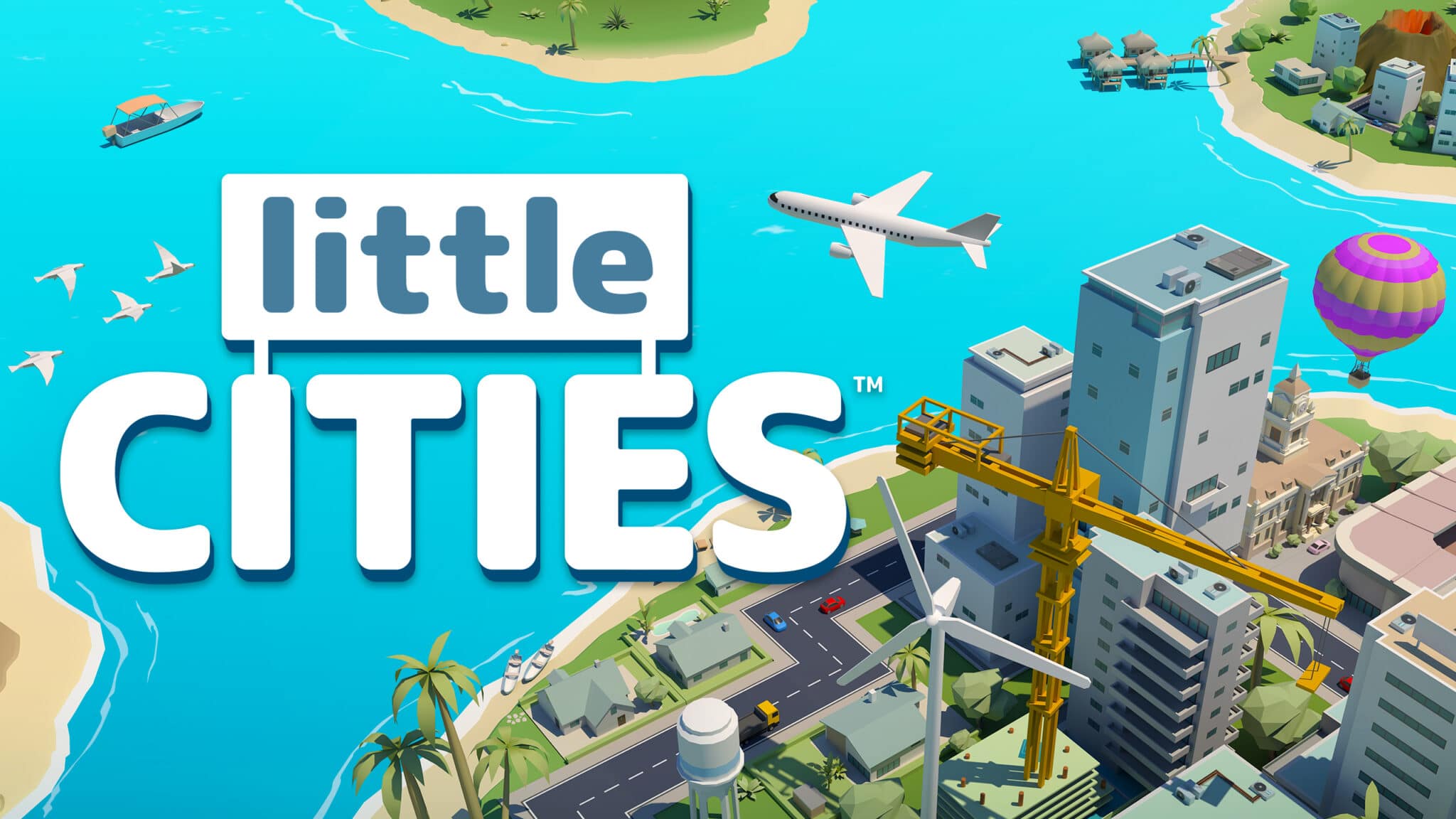
Starting Small, Expanding Out
Little Cities had a curious launch. Sandwiched next to Cities VR, there was an unavoidable risk of being overshadowed on release, perhaps looking like a simplified version of the former. As it turned out, the underdog came out on top; Cities VR failed to fully deliver on its expansive vision, marred by under-performing visuals and overwhelming VR design decisions. Little Cities, meanwhile, came away with a focused approach to the genre that puts intelligent VR implementation first.
But how did this tiny indie studio go from inception in 2018 to releasing a nDreams-supported title on the biggest VR headset of the moment just a few years later?
Long before the days of VR, James began his game development journey as a kid, making games in BASIC. A few years and a computer science degree later, he went on to cut his teeth with opportunities at some big name studios — EA, Rockstar and then, Ninja Theory.
“I did a lot of cool stuff there [at Ninja Theory], and that was where I really started to get involved with VR,” he said. “We had a really small team. I think there was about two or three of us, depending on when it was. But we were just concentrating on VR and just exploring VR stuff.”
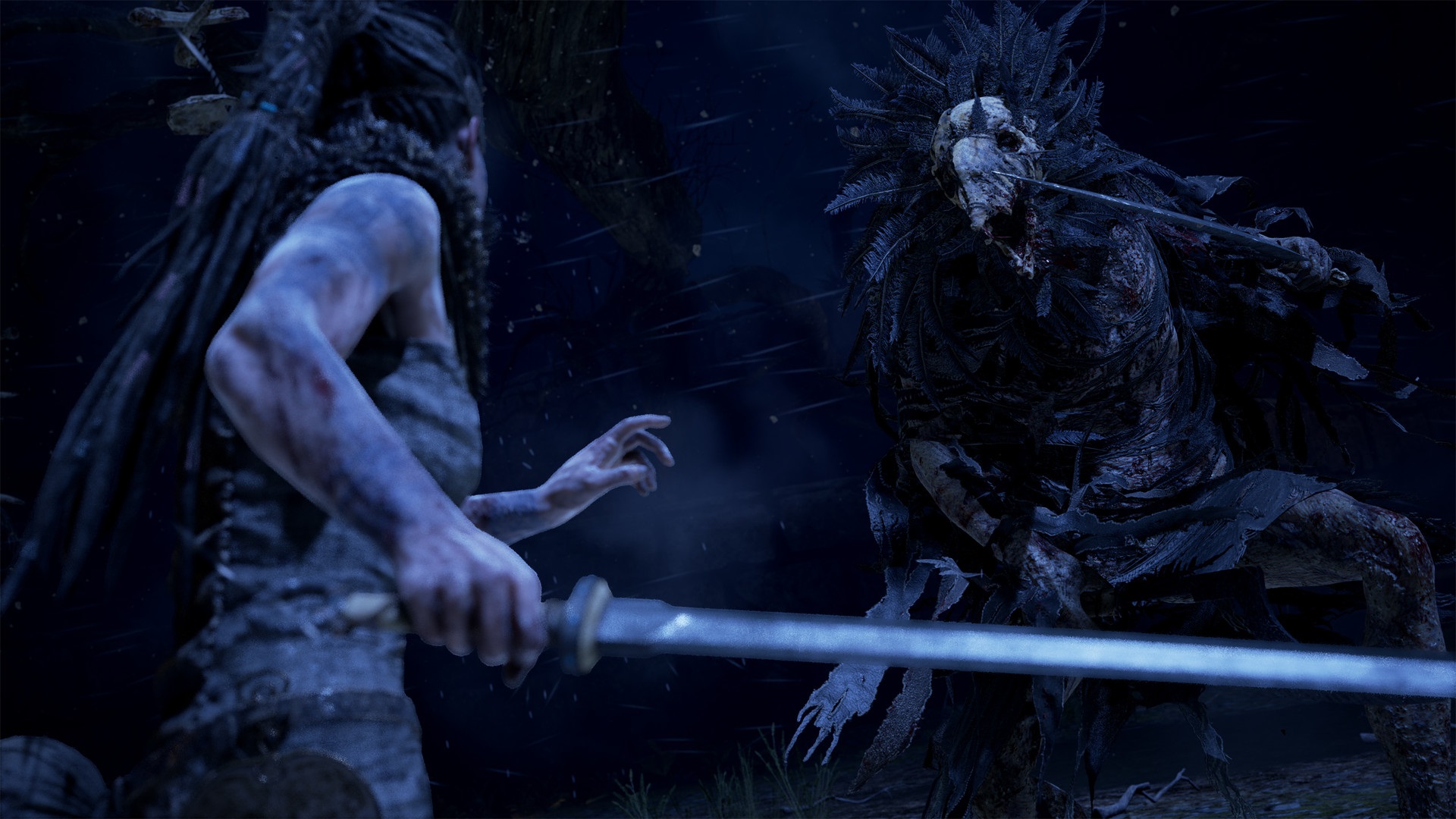
He ended up working on the VR version of Ninja Theory’s 2017 title Hellblade: Senua’s Sacrifice. “I did most of the work for Hellblade VR, and mapping that to VR, which had a lot of challenges,” he said. “And then, Ninja Theory got acquired by Microsoft and they didn’t really have as much of a focus on VR, but that was something I still wanted to do.”
As that experience came to a close, he began thinking about pursuing his own VR projects. “Working on something like Hellblade VR was interesting, because people weren’t doing third person VR games, and it works. It works quite well. And it left us with a feeling of like, ‘Well, which other genres could work in VR, which no one’s attempted?'”
He had always been a fan of the city simulator genre — one that, at the time, had yet to be tackled properly in VR — and began thinking about how early inspirations, like the original Sim City and Sim City 2000, might be adapted for VR.
It was at this point, around 2018, that James began work on what would become Little Cities. “I had this prototype that I was working on, and Kelly, my wife, was like, ‘This is something really special here. We should actually take this a bit more seriously. What do you think? What do you want to do with this type of thing?'” They presented the prototype to the UK Games Fund, and the resulting government grant allowed them to kick Purple Yonder, and Little Cities, fully into action.
“We just like went and jumped into the deep end, set up a company. We built [the prototype] up a little bit more and we ended up taking it to nDreams and they loved it too. As soon as they saw the game, they just got it. They just saw what we were trying to do and they were able to give us some support on the publishing side.”
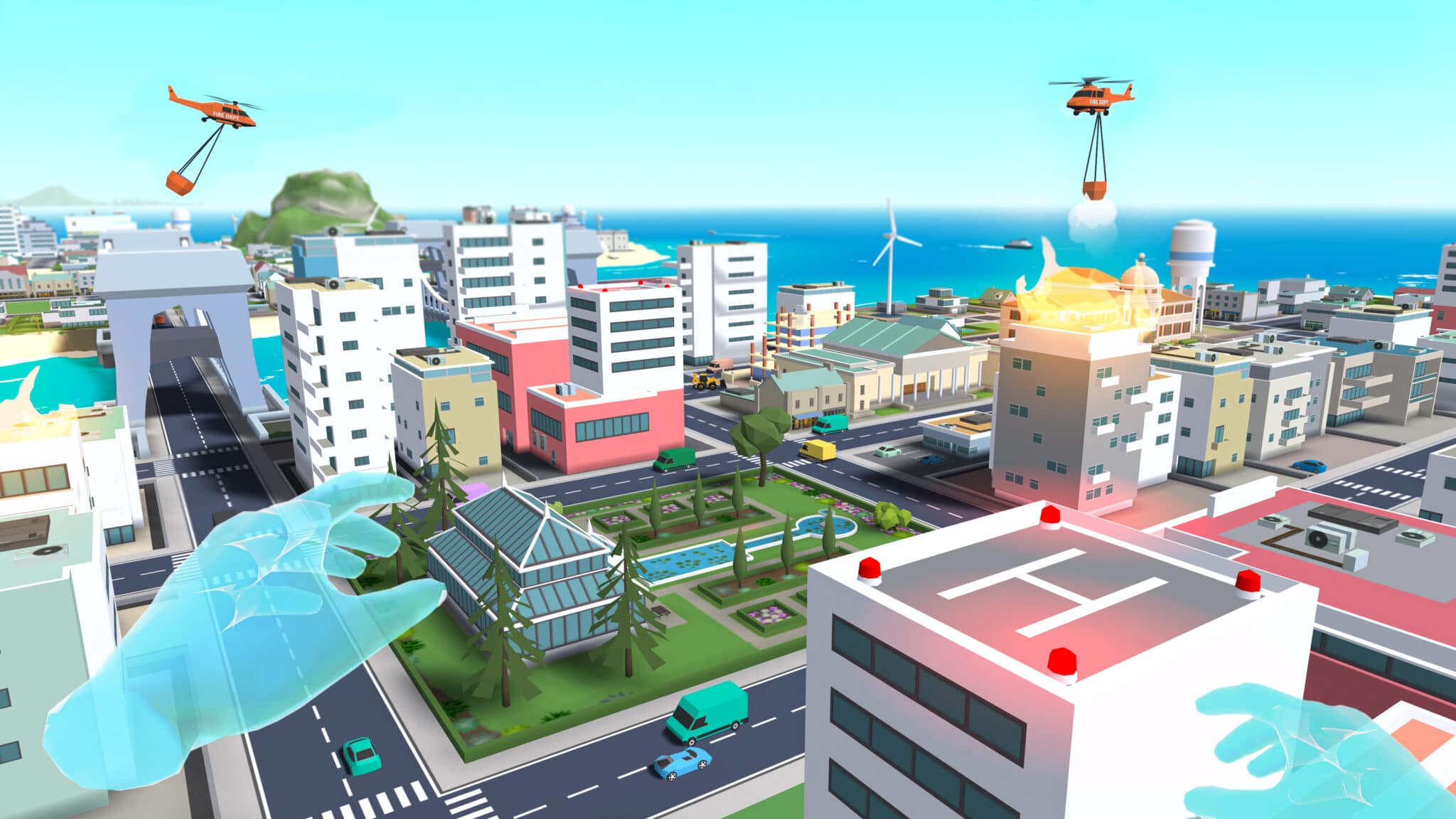
Interaction, Intuition, Innovation
Four years later and Little Cities is available on the Quest platform, a masterclass in made-for-VR design that presents an experience that is equally accessible and enjoyable for newcomers and experts to VR and the city simulator genre alike.
However, early versions of the game weren’t quite as intuitive as the final product. The user interface itself — one of the game’s shining accomplishments — underwent four or five complete redesigns over the course of development. “Really early on, it was just taking concepts like big flat panels, like you’d have in a PC title. It was just like, ‘Well, this isn’t fun. This isn’t really using VR to its best. What else can we do?'”
It wasn’t just clunky PC-to-VR menu translations that were avoided – every traditional aspect of the genre was reassessed and adjusted accordingly for the new medium. “Say you’ve never played VR before and you go buy a Quest and you bought our game,” explains James. “We want you to have a good experience. We don’t want it to be difficult to get into. We wanted it to be really accessible. And the same if maybe you’ve never played a city builder before either [and] you don’t know any of the general rules that you have around these types of games. We just wanted to make it so anyone can pick up and play it.”
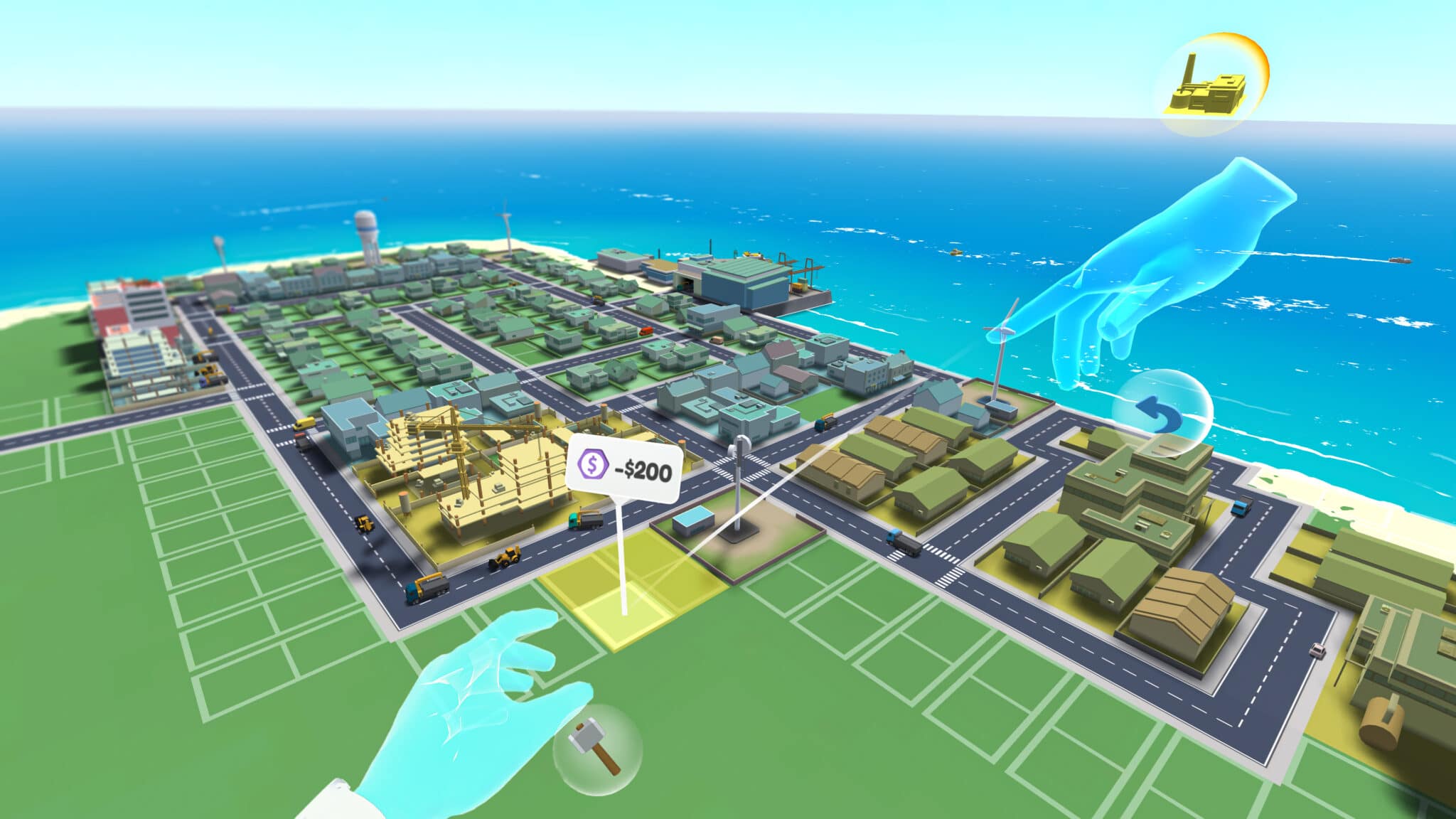
Gridlocked Traffic
All vehicles in Little Cities come from seaports or an airport. This includes construction vehicles, which need to arrive at a vacant space of land before construction can begin. “Traditionally in a game like this, you build your road networks, and then if there’s a lot of traffic, you just get like a stat somewhere, like, ‘Oh, the traffic’s bad.’ And you’re like, okay, guess I have to do something about it.”
Little Cities shifts this stat to a visual representation — you can actually see traffic building up and blocking construction vehicles from reaching their destination, slowing your progress. “That’s not affecting the citizens so much as it’s affecting the player. So now they just naturally get that feedback. That’s directly affecting them instead.”
Adapting the simulation language in this way – away from stats and notifications, focusing on a visual-led approach – avoids overwhelming the player with complex menus, budgeting, finance options and the like.
“When you’re building a game based on a simulation, you can go really deep with what you’re simulating — what your citizens are doing and the reasons they’re coming or leaving and stuff like that. But what it comes down to is… If you can’t show the player all those things in the simulation, then it’s sort of wasted.”
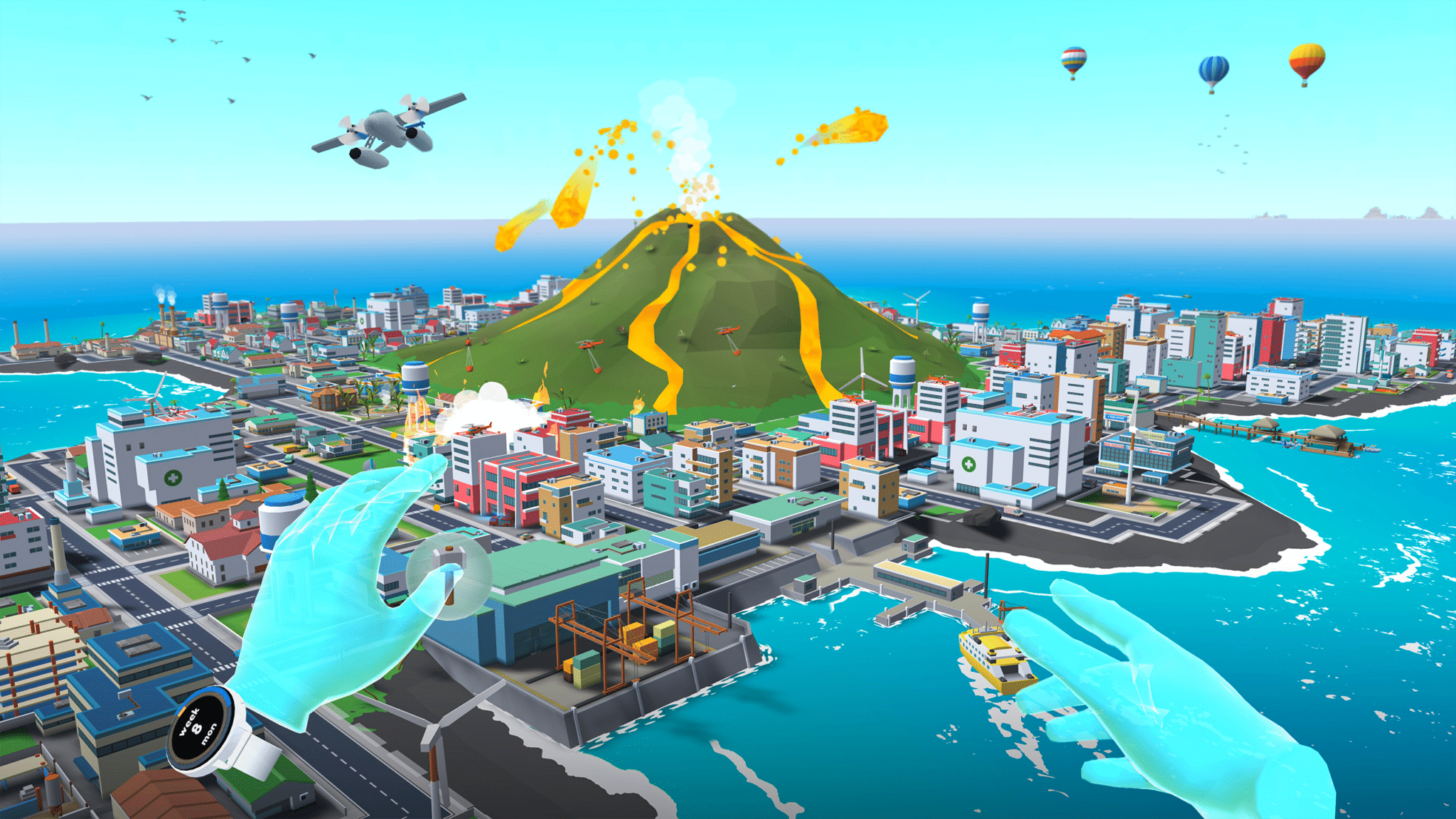
Creating Little Moments
When James asked his non-gamer dad if he wanted to try Little Cities, he only expected him to last 10 minutes before taking off the headset and giving some pleasant remarks. “We lost him for like about two and a half hours. He just played until the battery ran out. It was like, ‘Oh, okay, that’s interesting cause he doesn’t play games, so…'”
It’s easy to get lost in Little Cities, and the backbone of its immersion is a plethora of small yet poignant details at every turn. A whale breeching, hot air balloons taking to the sky, or a flock of birds scattering around you – these charming moments add hugely important depth to the experience. “We got traffic in the game, working with the cars driving around. And suddenly that brought a little bit more life to the game. And then from there, the next natural step was police cars, fire engines, stuff like that. The game’s even more alive.”
“And at some point, we were like, ‘Okay, these little details are really cool.’ That sort of became like a bit of a pillar in our development — little stories, little cities. The idea that there’s actually a whole subsystem in the code which is working out like, ‘Okay, what’s another cool thing to show to the player?'”
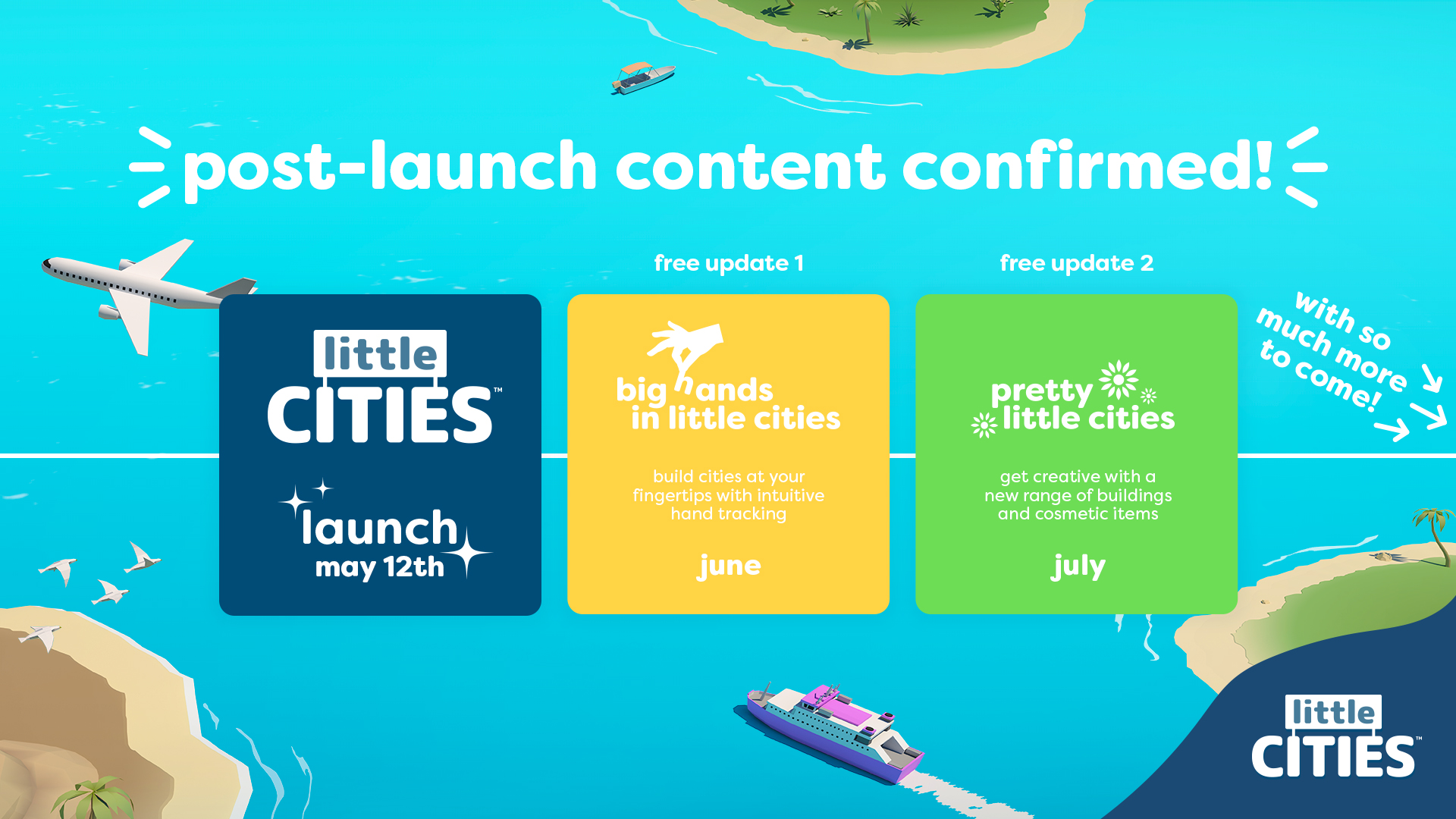
A Strong Foundation, Ripe For Expansion
There’s lots on the horizon for Little Cities. Work has already begun on hand tracking support, set to arrive in June, thanks to requests and feedback from players. The game wasn’t designed with hand tracking in mind, but the existing virtual hand-based menu and watch system feels like it was. “That just naturally translates really well to hand tracking,” says James. “It just fits, it’s great.”
Cosmetic and decorative items, arriving in July, will give players more personalization options with new one or two tile decorative options. “Maybe you can put a statue or a fountain, or there might be things that you can put [like] benches by the roadsides and stuff. Those are the kinds of things we’re thinking. If you ‘re already building a city, but you want to just make it look a bit nicer.”
Purple Yonder has lots of ideas on where else they can take them game, but they’ll also be listening to the community and shaping support around what they hear. “The one thing about Little Cities is that every time someone plays it, they’ve got ideas,” says James. “There’s just so many ways you can build on it and extend it, and we’ve got a whole host of ideas of how we can do that.”
With such a strong foundation, the only way for Little Cities to go is up.
Little Cities is available now on the Quest platform. You can read our full review here.

